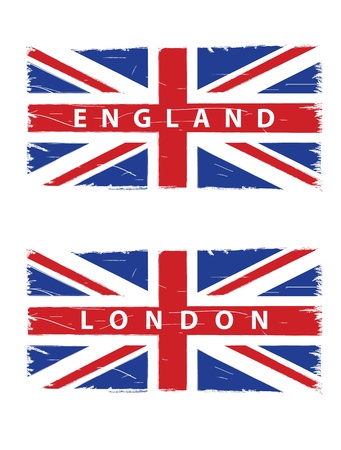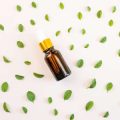Introduction to Essential Oils in British Context
Essential oils have long held a place of significance within the British herbal tradition, offering a concentrated form of nature’s botanical benefits. In Britain, these aromatic oils are deeply intertwined with the nation’s longstanding relationship with herbalism—a practice rooted in both folk wisdom and formalised medical knowledge. Historically, essential oils were extracted from native plants such as lavender, rosemary, and peppermint, each valued for their unique therapeutic properties. Today, they remain integral not only to holistic wellness routines but also to contemporary British health and beauty industries. The evolution of essential oils reflects broader trends in British society: a respect for natural remedies, a focus on evidence-based well-being, and a growing interest in sustainable practices. Understanding the historical context and ongoing importance of essential oils offers valuable insight into how traditional herbalism continues to shape British cultural and health landscapes.
2. Medieval Roots: Early Herbalism and Distillation Practices
The medieval period marked a significant turning point in the development of essential oils within the British herbal tradition. Early British herbal texts, such as the Bald’s Leechbook (circa 10th century), provide invaluable insight into how herbs were utilised for both medicinal and ritualistic purposes. These manuscripts documented not only the plants themselves but also detailed methods of extraction, primarily through simple infusions and decoctions rather than true distillation.
The Role of Monasteries in Herbal Knowledge Preservation
During the Middle Ages, monasteries became central hubs for the cultivation, study, and application of medicinal plants. Monastic gardens supplied an array of native and imported botanicals, while monastic apothecaries meticulously recorded herbal remedies and therapeutic blends. The monks’ scholarly approach enabled the preservation and transmission of classical Greco-Roman knowledge, which was often adapted to suit local flora and British climatic conditions.
Key Contributions of Monasteries
| Monastery Function | Impact on Herbal Tradition |
|---|---|
| Herb Gardens | Cultivation of diverse medicinal plants suited to British soil |
| Scriptoriums | Copying and translating herbal manuscripts for wider dissemination |
| Apothecaries | Preparation and testing of early herbal remedies and simples |
The Introduction of Distillation Techniques
The arrival of advanced distillation methods in Britain during the late medieval era—most notably via contact with Arab scholars—transformed herbal practice. By the 12th and 13th centuries, texts like those by Hildegard von Bingen began to reference rudimentary forms of steam distillation. This technique allowed practitioners to extract volatile plant compounds more efficiently, laying the groundwork for what would later be recognised as essential oils.
Distillation Timeline in Britain
| Period | Development |
|---|---|
| Pre-12th Century | Herbal infusions and tinctures dominate; no distillation |
| 12th–13th Century | Introduction of alembic stills; basic steam distillation begins |
| 14th Century Onwards | Refinement of techniques; broader range of distilled essences used in medicine and perfumery |
This convergence of monastic scholarship, botanical experimentation, and technological innovation established a foundation for Britain’s evolving use of essential oils—a legacy that continued to influence subsequent generations of herbalists.

3. Renaissance and the Rise of Apothecaries
The Renaissance marked a pivotal era for the development of essential oils within the British herbal tradition. As scientific inquiry flourished across Europe, Britain saw a renewed interest in classical herbal texts and the adoption of distillation techniques from continental scholars. This period witnessed a shift from purely folkloric herbalism to a more systematic and evidence-driven approach, with essential oils gaining recognition for their concentrated potency and therapeutic versatility.
During the 16th and 17th centuries, apothecaries emerged as key figures in British healthcare. These professionals bridged the gap between traditional herbalists and emerging medical practitioners. Apothecaries not only prepared remedies but also experimented with advanced extraction methods, such as steam distillation, which improved both the quality and yield of essential oils. Their shops became centres of innovation, where botanical knowledge was combined with practical chemistry to formulate more effective treatments.
The rise of apothecaries also influenced the trade landscape for essential oils in Britain. Imported botanicals—such as frankincense, myrrh, and exotic spices—became more accessible through expanding trade networks, while native plants like lavender, rosemary, and chamomile were increasingly cultivated and distilled locally. Apothecaries played a crucial role in standardising recipes and dosages, which contributed to the growing credibility of essential oils in both popular and professional contexts.
This professionalisation not only elevated the status of essential oils in British society but also laid the groundwork for their integration into mainstream medicine. The regulatory frameworks established by guilds like the Worshipful Society of Apothecaries ensured quality control and ethical practice, fostering public trust in these potent plant extracts. By the end of the Renaissance, essential oils had become an indispensable component of British materia medica—a legacy that continues to shape their use today.
4. Victorian Era: Scientific Rigor and Mainstream Popularity
The Victorian era (1837–1901) marked a pivotal point in the history of essential oils within British herbal tradition. This period witnessed an unprecedented blend of scientific inquiry, industrial advancement, and societal enthusiasm for both domestic remedies and personal well-being. Essential oils became emblematic of a culture striving to balance empirical understanding with long-standing folk practices.
Scientific Advancements and Analytical Methods
Victorian Britain was defined by its embrace of scientific rigor. Chemists and physicians began systematic research into the composition and efficacy of plant-derived oils. The introduction of steam distillation technology enabled more efficient extraction and purer forms of essential oils, facilitating their study and standardisation. Major universities and botanical gardens, such as Kew Gardens, contributed to the cataloguing and classification of medicinal plants and their essences. Publications in medical journals highlighted case studies on lavender oil’s calming effects or eucalyptus oil’s potential to relieve respiratory symptoms, contributing to a growing evidence base.
Household Remedies and Everyday Use
At the same time, essential oils became widely incorporated into household routines across Britain. Middle-class families used them not only for health purposes but also in cleaning products, perfumery, and culinary applications. Apothecaries and chemists shops offered ready-made tinctures, liniments, and aromatic oils for ailments ranging from headaches to digestive complaints. Below is a comparative table illustrating common uses during this era:
| Essential Oil | Popular Victorian Household Use | Associated Health Claims |
|---|---|---|
| Lavender | Linen sprays, bath infusions | Anxiety reduction, sleep aid |
| Peppermint | Digestive tonics, inhalants | Relief from indigestion, headaches |
| Eucalyptus | Chest rubs, room fresheners | Easing coughs, clearing sinuses |
| Rosemary | Hair rinses, culinary flavouring | Cognitive stimulation, scalp health |
Critical Perspective on Mainstream Adoption
Despite their popularity, essential oils were not without sceptics. The periodical press occasionally criticised unsubstantiated claims or adulterated products sold by unscrupulous vendors. Nevertheless, essential oils’ integration into mainstream life reflected wider Victorian values: a belief in progress through science tempered by respect for traditional knowledge.
In summary, the Victorian era solidified essential oils’ place in both scientific literature and everyday British life. Their dual role as subjects of scholarly research and practical household solutions illustrates the unique synthesis of empirical investigation and cultural tradition that characterises this period in British herbal history.
5. Modern Revival: Aromatherapy and Clinical Applications
The 20th century witnessed a significant revival of essential oils within the context of British herbal tradition, catalysed by a growing interest in holistic health and alternative therapies. This resurgence was notably driven by pioneers such as Marguerite Maury, who introduced the concept of aromatherapy to the UK in the 1950s, integrating essential oils into massage and skincare practices. Her work, along with that of Robert Tisserand and other British aromatherapists, laid the foundation for a distinctly British approach to aromatherapy—one that emphasised both scientific research and traditional herbal wisdom.
In contemporary Britain, essential oils have moved beyond folk remedies to become recognised components within complementary healthcare. Today, British practitioners employ aromatherapy in various clinical settings, including hospices, hospitals, and general practice clinics, often as adjuncts to conventional treatment. Essential oils such as lavender, tea tree, and chamomile are commonly used for their evidence-based calming, antiseptic, and anti-inflammatory properties. The integration of essential oils into nursing care is supported by regulatory bodies like the Complementary and Natural Healthcare Council (CNHC), reflecting a broader acceptance within mainstream health services.
This modern revival has also prompted rigorous research into efficacy and safety, leading to standardisation efforts and quality control measures unique to the UK market. As a result, British consumers now benefit from both traditional knowledge and scientifically validated applications, positioning essential oils as a bridge between heritage herbalism and contemporary clinical practice. The ongoing evolution of aromatherapy in Britain underscores its dynamic role in supporting holistic wellbeing across diverse populations.
6. Contemporary Trends and Ethical Sourcing
In recent years, the essential oil market in Britain has undergone a significant transformation shaped by evolving consumer attitudes, growing environmental awareness, and stricter regulatory frameworks. British consumers are increasingly favouring products that are locally sourced and produced with transparency, reflecting a wider trend towards sustainability and ethical consumption. This shift is partly driven by concerns about environmental impact, as well as a desire to support local farmers and producers who uphold traditional herbal practices.
The demand for locally sourced essential oils has encouraged British growers to cultivate classic native botanicals such as lavender, chamomile, and peppermint on a commercial scale. This not only reduces carbon emissions associated with long-distance transportation but also helps preserve the botanical diversity integral to Britain’s herbal heritage. Furthermore, many British essential oil producers now prioritise organic farming methods and biodiversity conservation, aligning with both consumer values and EU/UK environmental directives.
Sustainability is a key consideration in contemporary British herbalism. The industry has responded by adopting rigorous supply chain audits and certifications, such as Soil Association Organic and FairWild standards, to ensure that raw materials are harvested responsibly without depleting wild populations or harming ecosystems. Ethical sourcing also extends to fair labour practices, ensuring that workers throughout the supply chain receive fair wages and safe working conditions.
Regulation has played an increasingly important role in shaping the UK’s essential oil sector. Following Brexit, the UK government has tightened regulations around labelling, safety testing, and marketing claims for aromatherapy products. These measures are designed to protect consumers while supporting reputable local businesses that comply with high standards of quality and safety.
Ultimately, the contemporary British essential oil market reflects a blend of tradition and innovation—honouring centuries-old herbal knowledge while responding to modern imperatives of ethics, sustainability, and transparency. As consumer expectations continue to evolve, the industry’s commitment to responsible sourcing and regulatory compliance ensures that Britain’s herbal tradition remains relevant and resilient in the 21st century.


